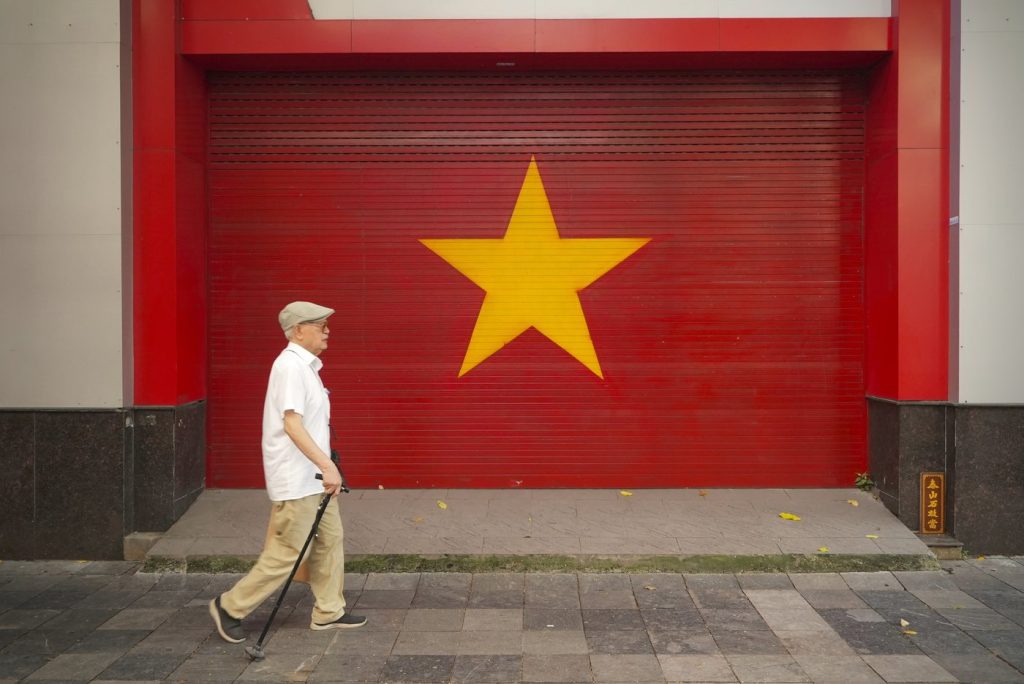HANOI, Vietnam (AP) — Under the vibrant red banners and the gold bust of Ho Chi Minh at Hanoi's central party school, Communist Party chief To Lam announced a significant economic transformation for Vietnam, marking a pivotal moment in the country's development journey. This announcement foreshadows what could be Vietnam's most ambitious economic overhaul in decades, aligning with its aspirations to emerge as Asia's next "tiger economy" by 2045.
Vietnam's economic landscape has undergone remarkable changes since 1990, when the average citizen could afford approximately $1,200 of goods and services annually. Today, that figure has surged to over $16,385, illustrating a 13-fold increase in economic capability. The country's shift to a global manufacturing powerhouse has lifted millions out of poverty and reshaped its urban infrastructure. However, challenges loom ahead, including overdue reforms, an aging population, climate risks, and institutional shortcomings. Notably, pressures from the U.S. regarding Vietnam’s trade surplus, particularly with President Donald Trump demanding changes, further complicate these dynamics.
The nation's reliance on a low-cost, export-driven model is showing signs of slowing, prompting the need for a strategic pivot. Vietnam's government is planning reforms that will focus on expanding private industries, strengthening social protections, and investing in sectors like technology and renewable energy. However, the threat posed by climate change continues to grow, necessitating immediate action to secure a sustainable economic future.
The trade surplus with the U.S. reached an astounding $123.5 billion in 2024, attracting ire from the Trump administration. Negotiations around tariffs have resulted in a proposed 20% levy on Vietnamese goods, with higher rates for products suspected of being routed through Vietnam to evade tariffs. Analysts highlight the necessity for Vietnam to balance its trade practices while transitioning its economy, a reality recognized long before the U.S. tariffs came into play.
Countries like South Korea and Taiwan have successfully navigated the "middle-income trap" through sector-specific innovations in electronics, semiconductors, and finance. In contrast, Vietnamese economic growth has diversified into a myriad of sectors, making it imperative for the nation to foster multiple industries rather than depend on a singular export model.
Drawing inspiration from China's developmental strategies, Vietnam is investing in high-tech industries, such as computer chips and renewable energy, while also enhancing its infrastructure, including plans for civilian nuclear plants and a $67 billion high-speed railway connecting Hanoi to Ho Chi Minh City.
Plans are underway to establish Vietnam as a global financial center, with the government aiming to create special financial centers in Ho Chi Minh City and Danang to attract foreign investment through tax incentives and streamlined processes for business disputes.
A transformative shift is occurring as Vietnam’s Communist Party embraces the idea of private businesses as the "most important force" in the economy, as stated in Resolution 68 passed in May. Historically dominated by state-owned enterprises, the private sector has faced challenges in accessing loans and markets. This policy shift aims to foster local innovation and competitiveness globally by easing regulations for businesses that achieve significant technological advancements.
Despite these efforts, Vietnam's economic growth is threatened by climate change, as evidenced by the damages from Typhoon Yagi, which inflicted $1.6 billion in losses, impacting nearly half of the nation's economic output. Projections estimate that without robust climate adaptation measures, Vietnam could lose up to 14.5% of its GDP annually by 2050 and push a million citizens into extreme poverty by 2030.
Moreover, the country faces demographic challenges, with the "golden population" window closing by 2039 as the working-age population begins to decline. This trend could strain productivity and social services, particularly as more women are required to balance work and caregiving responsibilities. Preventative healthcare and raising the retirement age are among strategies being considered to mitigate potential labor shortages.
In summary, Vietnam is poised at a critical juncture in its economic evolution. The potential for growth hinges on successfully navigating internal reforms, external pressures, and environmental challenges, setting a foundation for a prosperous and sustainable future.










